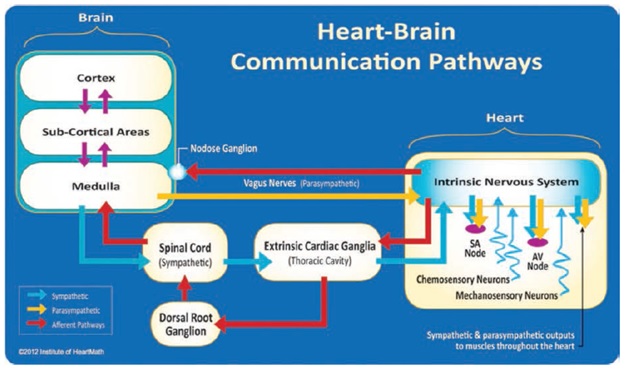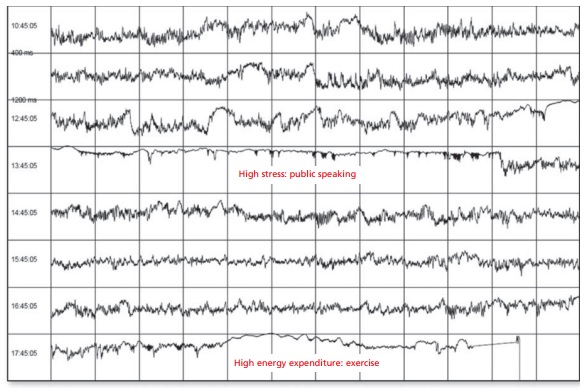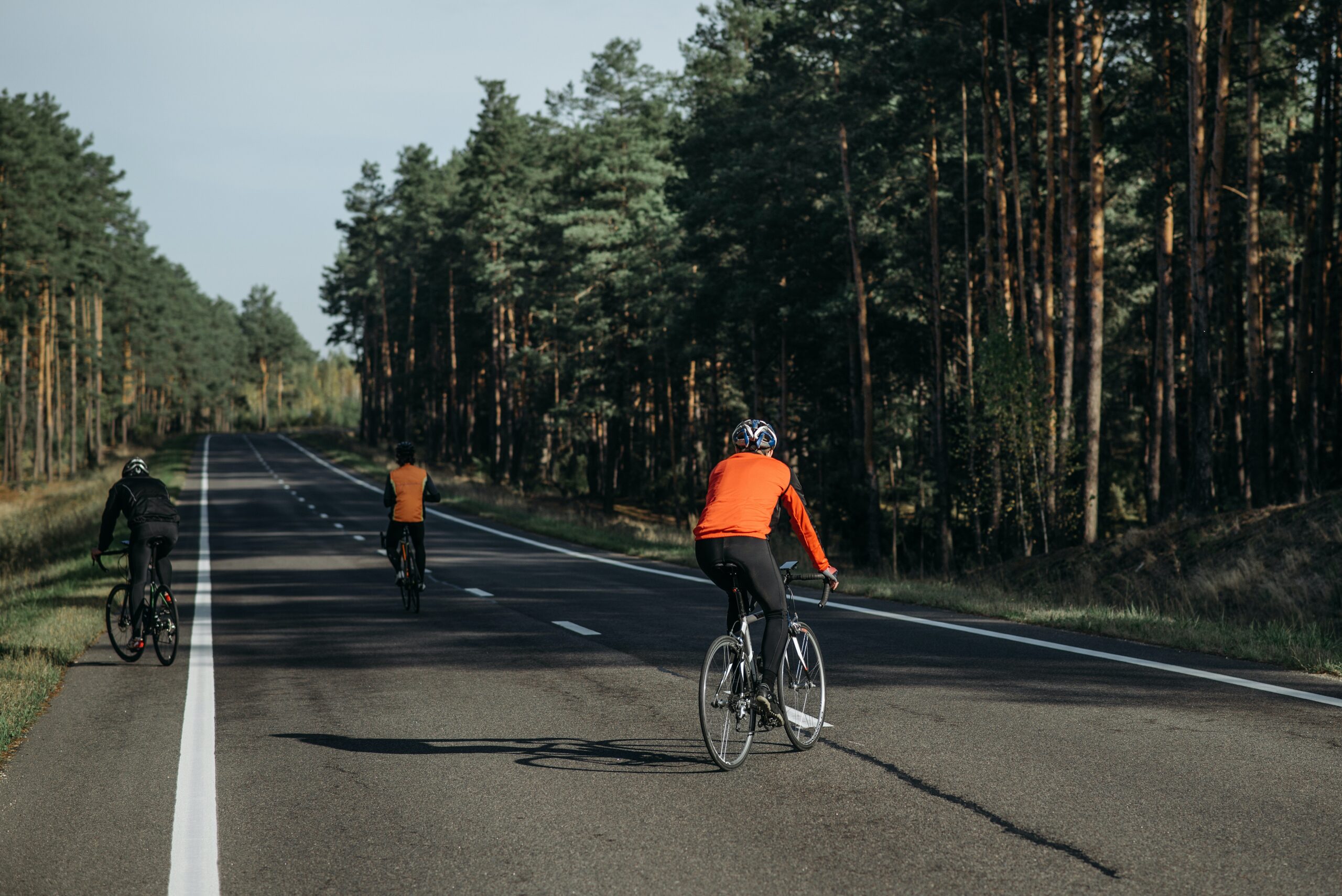Jennifer Lewis contributed this thoughtful article to the Nevada Bicycle Coalition Blog:
The Importance of Measuring Heart Rate Variability for Cyclists
In the sports medicine and biofeedback fields alike, the buzzword is Heart Rate Variability (HRV): the change in the time intervals between 
adjacent heartbeats, measured in milliseconds. A higher HRV variability indicates a low-stress state, while a low HRV suggests a greater need for rest, recovery and better sleep. As academics, Rollin McCraty, Ph.D. and Fred Shaffer, Ph.D. note, “An optimal level of HRV within an organism reflects healthy function and an inherent self-regulatory capacity, adaptability, or resilience.” A high HRV indicates, as it were, that the body is able to adapt to different stressors and challenges, though this measurement should not be too high – otherwise, you could be experiencing arrhythmia (a potentially dangerous condition which occurs when the electrical impulses that control heartbeats are not working properly). A cyclist’s HRV should be high enough to indicate that their central nervous system is communicating efficiently with the heart, and that the heart is able to make the tiny adjustments it needs. A high HRV shows that an athlete’s sympathetic (stress response) and parasympathetic (relax and recover response) are in sync.
As a cyclist, it is important to measure your HRV because the latter gives you vital information regarding the physical and mental stress you may be going through. For instance, those who are addicted to physical activity or who overtrain, can take a long time to discover the negative effects of pushing body and mind beyond its limits. Symptoms of overtraining may include reduced performance on your bike, soreness and stiffness, muscle wasting, fatigue and even adrenal exhaustion. However, by measuring your HRV, you can discover that you have been overtraining long before reaching these limits. A decreased HRV will show that it is much harder to increase your heart rate despite making greater efforts, and that your heart rate takes longer to recover post workout. In essence, a lowered HRV shows that your body is not adapting to stress as efficiently because it is overworked.
Current apps such as the Sweetbeat HRV app enable you to glean the connection between high stress and low HRV. Remember when using these apps that the aim is not always to aim for a very high HRV (since improving as a cyclist does involve putting your body through stress); rather, the aim is to swing between training hard and recovery, so that your body is not in a constant low-HRV state. The apps will help you clearly identify when you are under unhealthy stress levels, letting you know that you need to make necessary changes to your workout and lifestyle.
There are many steps you can take to increase your HRV in a healthy manner, for optimal performance as a cyclist. Top tips include:
• Balance your cycling and gym workouts with holistic exercises: Studies have shown that holistic exercise programmes incorporating exercise like yoga and Tai-Chi, used for thousands of years to enhance mental and spiritual (in addition to physical) health, have the uniquely powerful ability to lower levels of stress hormones. Yoga is additionally an ideal activity for those with a tendency to overtrain, since it employs techniques like controlled breathing and mindful meditation to curb anxious thought patterns and keep the mind in the present moment.
• Ensure you get enough sleep: Rest and sleep are vital if muscles which have been pushed to limits during workouts, are to recover. A good sign that you need a longer recovery period and better sleep is constant soreness (i.e. of the type which lasts beyond 72 hours after your workout). Another sign you have been pushing yourself too hard is decreased motivation or, on the contrary, having obsessive thoughts about cycling or your workout regime.

• Drink green tea: Studies have shown that green tea can increase the HRV, owing in part to L-theanine, one of its active compounds, which is capable of reducing sympathetic nervous activity.
• Find ways to curtail stress from your life: Chronic stress will do more than hamper your performance in cycling; it has also been linked to serious diseases like heart disease and Type II diabetes. Try to make the active lifestyle changes which are reasonable at this point in your life. These may include a change of job or profession, or eliminating relationships which cause more stress than good.
• Avoid polluted areas: Studies have shown that those who cycle in high pollution environments have a lower HRV. Try as much as possible to cycle in natural areas, since green environments have also been proven to lower cortisol levels and promote greater concentration, well-being and sports and academic performance.
From Terry:
The attached paper, published in Global Advances in Health and Medicine, suggests that an athlete can use his mind as well as his body to improve his HRV and athletic performance.
“Emotional self-regulation strategies may contribute to improved client health and performance, alone, or in combination with HRV biofeedback training. Numerous studies have provided evidence that coherence training consisting of intentional activation of positive emotions paired with HRV coherence feedback may facilitate significant improvements in wellness and wellbeing indicators in a variety of populations.” Here is a link to that paper: https://www.heartmathbenelux.com/doc/HRV%20new%20perspectives%20on%20physiological%20mechanisms%20assessment%20of%20self%20regulatory%20capacity%20and%20risk.pdf
Note: In the interest of full disclosure, Dr. Rollin McCraty quoted above, is employed by the Institute of HeartMath, which sells one of these heart rate variability feedback devices. HRV devices in addition to Sweetbeats HRV, include emWavePro, or Inner Balance for iOS devices (HeartMath, Inc, Boulder Creek, California), Relaxing Rhythms (Wild Divine, Boulder City, Nevada), and the Stress Resilience Training System (Ease Interactive, San Diego, California).

